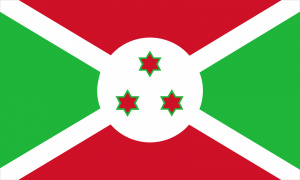Language/Rundi/Grammar/How-to-Use-Be
Hi Rundi learners! 😊
In this lesson, we will focus on how to use the verb "be" in Rundi sentences. We will cover each form, the meaning of each form, and give examples to help you use them in context. This lesson is aimed at intermediate Rundi learners, but beginners are also welcome to read it. Don't hesitate to reach out to native Rundi speakers on Polyglot Club and ask them any questions! It's the best way to improve your language skills.
Before we start, make sure you have a good understanding of Rundi Grammar, especially verbs and tenses. Let's get started!
Basic Forms of "be" in Rundi[edit | edit source]
In Rundi, the verb "be" has three basic forms: ni, ari, and yuko. Each of them has a specific meaning and use in a sentence. Here's an overview:
| Rundi | Pronunciation | English |
|---|---|---|
| ni | knee | to be |
| ari | ah-ree | to be (in the past tense) |
| yuko | you-koh | to exist/be (in the present continuous tense) |
The Use of "ni" in Rundi Sentences[edit | edit source]
The verb "ni" is the present tense form of "be" in Rundi. It has two forms: "ni" and "niba". The latter is used to indicate existence. Here are some examples:
- Umwana ni umwezi. (The child is young.)
- Umwana niba ari hehe? (Is the child here?)
In the first example, "ni" is used to indicate a state of being, the child is young. In the second example, "niba" is used to ask if the child is present.
The Use of "ari" in Rundi Sentences[edit | edit source]
The verb "ari" is the past tense form of "be" in Rundi. Here are some examples:
- Aba ari bantu biza. (Those were noisy people.)
- Uyu mwana ari mwiza. (This child was beautiful.)
"Ari" is used to describe a state of being in the past.
The Use of "yuko" in Rundi Sentences[edit | edit source]
The verb "yuko" is used to indicate existence and can be translated to "there to be" in English. Here are some examples:
- Abana bavuga ahandi yuko? (Are the children talking over there?)
- Amashuri yuko hejuru yibura. (The schools that are on the hills destroyed.)
In the first example, "yuko" is used to ask if the children are speaking in a specific location. In the second example, "yuko" is used to describe the location of the schools that were destroyed.
Negation of "be" in Rundi[edit | edit source]
To negate the verb "be" in Rundi, we use a negative particle "nti". Here's an example:
- Uyu mwana nti yuko hano. (This child is not here.)
In this case, "nti" is used to negate the existence of the child here. Note that "nti" can also be used to negate other verbs in Rundi.
Contractions of "be" in Rundi[edit | edit source]
Rundi verb contractions are quite different from English. Instead of contracting verbs with pronouns, Rundi contracts verbs with other words. For instance, "ni" can contract with "niba" to form "niba" or "nka". It can also contract with "nte" to form "nte" or "nta", among other forms.
Conclusion[edit | edit source]
In this lesson, you have learned about the different forms of "be" in Rundi and when to use them. Keep practicing and try to use them in context, so you can feel more confident using them. If you have any questions, please ask them in the comments section below.
➡ Feel free to edit this wiki page if you think it can be improved. 😎
Now that you've completed this lesson, don't stop learning! Check out these related topics: How to Use Have & Plurals.
Other Lessons[edit | edit source]
- Negation
- Give your Opinion
- How to Use Have
- Pronouns
- Gender
- Conditional Mood
- Plurals
- Adjectives
- Questions
Sources[edit | edit source]

